As an investor, entrepreneur, and researcher, Dr. Shanina Knighton is making history every day through her work at Case Western Reserve University. But in her quest to combine her love of science with making the world a safer place, she’s also uncovered another talent – how to navigate the complexities of the dreaded university financial aid system and make it work for her. “As someone who grew up in poverty, I have to be honest, the first time I saw a balance of $3,000 the thought of having student loans made me very uncomfortable,” Dr. Knighton shared. “Then I realized this was the biggest investment I could make in myself.”
With tens of millions of borrowers owing more than $1.5 trillion in outstanding student loan debt, loan forgiveness is currently a hot topic. And Dr. Knighton knows firsthand the stresses of carrying mountains of student loan debt. Nevertheless, she encourages a proactive approach to tackling it. “We look at it as being a thorn in our side, but with all the opportunities out there that offer loan forgiveness or repayment, putting it off, in my opinion, is the worst thing. You should instead be asking yourself ‘What can I do, or what can I offer that can greatly reduce what I owe?’”
Dr. Knighton’s tried and true methods to student loan forgiveness
1. Use your connections
“I’ll tell anyone that the Director of Financial Aid should be your best friend because they’re going to know which types of resources are out there. They’ll let you know if money is available and where to find it. You just have to ask.” Dr. Knighton reiterates that the college experience is not just about getting through the coursework; it’s also about building relationships, meeting people, and taking advantage of as many opportunities as you can.
2. Pitch competitions
Many colleges and universities have competitions where entrepreneurs and inventors present their ideas. Dr. Knighton feels that many students don’t take advantage of these opportunities such as pitch competitions as they should. “This is money with no consequence,” said Dr. Knighton. “If you participate in a competition and you win, you win that money free and clear.”
3. Loan Repayment Programs
As a medical researcher in a high-priority area, Dr. Knighton also took advantage of the National Institute of Health’s Loan Repayment Program. “If you have a compelling enough case and compelling research, show productivity and it aligns with the NIH, they will help you and support you to help pay off your student loans.”
4. Job-sponsored
Many companies offer options to chip away at student debt. Some will even give you an option of whether you want them to pay into your pension or pay toward your student loan debt. Also, keep in mind that loan repayment by your employer is taxed as income. This is merely a snapshot of the programs available to help reduce student loan debt. And they are not limited to researchers or members of the healthcare field. Click here for a comprehensive list of student loan forgiveness and repayment programs.
5. Persistence pays off … your student loans
Dr. Knighton practices what she preaches when it comes to uncovering the myriad funding opportunities available in her field. After obtaining a Bachelor of Arts, a nursing diploma, a Bachelor of Science in Nursing (BSN) and gaining entry to her current Ph.D. program, Dr. Knighton is looking at a tab of more than $183,000. However, her prowess in navigating the financial aid system has come to fruition.
“So far, $70,000 has been paid off over two years through the NIH Loan Forgiveness Program,” Dr. Knighton said. But she’s not stopping there, as she just applied for another round of funding from a government grant. Should that go through, it’ll cover $100,000 over the next two years. “So, I’ll have about $10,000 in student loan debt once it’s all said and done.”
